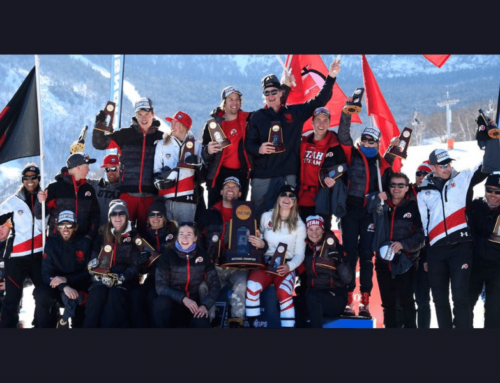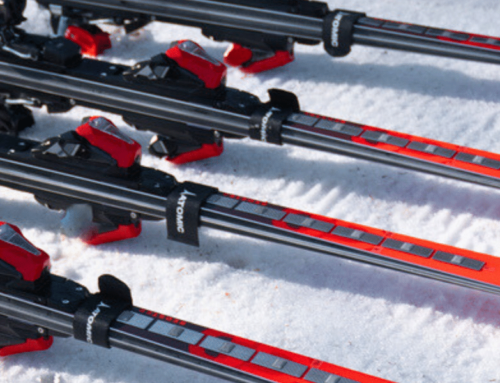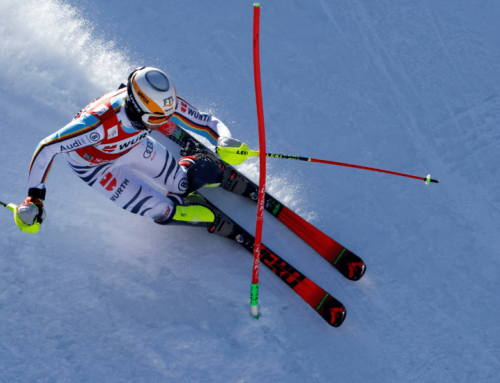SRM: Let’s talk about cost
It’s an old conversation. Let’s try to have it in a new way.
Ski Racing Media, our staff and contributors are excited to embark on an extensive discussion surrounding what we believe is the greatest threat to our sport: cost.
This isn’t our first time taking on a big issue through an extensive series of articles. Last summer, we delved into collegiate issues, and in the fall, we analyzed the U.S. development system. In both cases, we hope the discussion led to constructive developments and improved communication within those areas. At the end of the day, especially since Dan Leever’s acquisition of Ski Racing in 2019, our No. 1 goal has been to make a positive impact on the sport — and that’s what we hope to do here.
About a year-and-a-half ago, Ski Racing contributor Steve Porino wrote a poignant and alarming editorial on the skyrocketing cost of alpine ski racing. Maybe you agreed with every word he wrote; maybe you didn’t, but his sincere concern for a sport he so obviously loves was on full display. At the time, I promised Pino if he stuck his neck out and wrote that editorial for us, Ski Racing would do what it could to keep the conversation going.
I’ve been involved in ski racing in one form or another for most of my life. A kid from Jersey, I started racing at a relatively late age (13, I think) when my parents shipped me off to boarding school in New Hampshire. It was a privileged sport then, but nowhere near the cost families are enduring now. I can still remember my dad flipping out when I finally convinced my mom to buy me a second pair of skis for slalom.
Ski racing was never intended to be anything more than a healthy activity for me. I was late to the game and weighed probably 130 pounds my freshman year of high school. I don’t think there was ever any real possibility I would do anything with it other than what I did.
While my results on the hill weren’t anything to write home about, ski racing did a lot for me. For starters, it made me into a pretty good skier (different from being a good racer). During the winter months at UVM, I spent more days hiking the Chin on Mount Mansfield than I did in the classroom in Burlington (not advocating that, kids). I went on to work as an instructor in Colorado for a number of years before landing a career in journalism covering, mostly, skiing. I also did a stint working at the club level, and while it wasn’t my job to make policy decisions within those ranks, I was more than a fly on the wall for many important discussions surrounding these issues. Along the way, of course, I made wonderful, lasting friendships, which is something many people emphasize when they talk about the value of skiing and ski racing. Most of my friends today are people I met through skiing.
I bring all this up because my background in the sport is similar to just about everybody’s. Most people who ski race — I bet 99% or more — never go on to race at a World Cup or in an NCAA national championship. Do these folks, the 99%, regret the substantial investment they and their parents made in the racing experience? Mostly, I think not. I certainly don’t. My parents don’t.
From what I can tell, there’s really only two reasons we’re in this crazy business to begin with. The first is everything I mentioned above: to develop strong skiing fundamentals, to facilitate a lifetime of enjoyment with family and friends, to get outside, to get some fresh air, and to be able to look back and say, “I competed in the coolest sport on the planet.”
The second reason is pretty simple: to go over to Europe and win.
Now, I would argue, as many people do, these two pursuits are not mutually exclusive. In fact, they are inextricably linked. This conversation is about participation as much as it’s about cost. If we don’t have robust participation, we’re never going to succeed at the top level. Maybe a flash in the pan here and there, but our goal is to try to build a system that churns out athletes. There are people right now working around the clock who have dedicated their whole lives to the goal of churning out athletes.
There’s just one caveat: You need athletes.
Hint: the more, the better.
One of the nice things about this issue is there is near-universal agreement that the sport is too expensive and that runaway professionalization is a serious threat to its wellbeing. I sympathize with the people who have had to make these tough decisions over the years to try to build the best programs possible, to give their athletes the best opportunities possible. It’s human nature to incrementally look for ways to get better, ways to get an edge over the competition. That’s what sports are all about. And restricting high performance is a slippery slope. We don’t want to shoot ourselves in the foot by preventing athletes from pursuing the sport at the highest level. As with any regulatory effort, it’s critical that we not overstep and inhibit progress.
But as a community, we need to start asking, are these financial decisions making us stronger as a nation or simply making us faster than our neighbors? Are we giving our kids an edge over the competition or pricing the competition out of the market? Has our desire to be fast at home become more important than the collective good of our nation and the health of our sport?
Sadly, most people think we’ve passed that point.
Speaking of Health of Sport, that happens to be the name of the task force charged with looking into all this stuff, to create policies and recommendations that will rein in cost. Yes, the Health of Sport Task Force, as it is appropriately called, was formed out of the U.S. Ski & Snowboard Congress in 2019. Its members are some of the most experienced and well-respected names in the business. I think it would be impossible to assemble a group of people who care more about the future of alpine ski racing in the U.S. than they do.
In public statements, members of Health of Sport have acknowledged little progress. As part of their efforts, there was a proposal last year that would have limited the number of FIS starts for U.S. racers. While well-intentioned, this proposal to curtail travel, point-chasing, and overall cost was debated and ultimately shot down by the more free-market wing in our community — perhaps with good reason. (I’ll leave that up to the pros to decide.)
The task force has been busy working ever since. Without getting into specifics, however, there have been regional and factional disagreements that have prevented further action. This is also not a new problem. We’re not Switzerland. Within our vast and geographically diverse continent — from California to Minnesota to Vermont, and up to British Columbia, Ontario, and Quebec — it is beyond challenging to create policies that work well for everyone. What’s good for the goose in North America isn’t always good for the gander.
Recently, just in the last few weeks, a proposal was circulated to officially dissolve Health of Sport and defer responsibility to the multiple working groups within Congress. That proposal was met with objection by several of its members, and as of this writing, the task force is still operating and working to secure positive outcomes for the sport.
I don’t underestimate how complicated this issue is. Since we started cooking this series up, I’ve had a dozen or more phone calls with sport-leaders, athletes, and ski-racing journalists. At the end of many of those calls, my head was often spinning faster than when we got started.
One of my favorite calls was with Ski Racing contributor Gordie Bowles who said, “This is a conversation everyone has had sitting at the bar until it closes, and by the time they throw you out, you realize you’ve gotten nowhere.”
Well, my friends, we’re going to keep this bar open as long as we have to, and hopefully by the time the bartender pops on the house lights and hollers “last call,” we’ll have figured some stuff out; we’ll walk away a little smarter and a lot more aware.
I’ll do my best to give you a strong pour.
Have something to say about this? Send a letter to the editor. If it’s good, we’ll publish it.





















